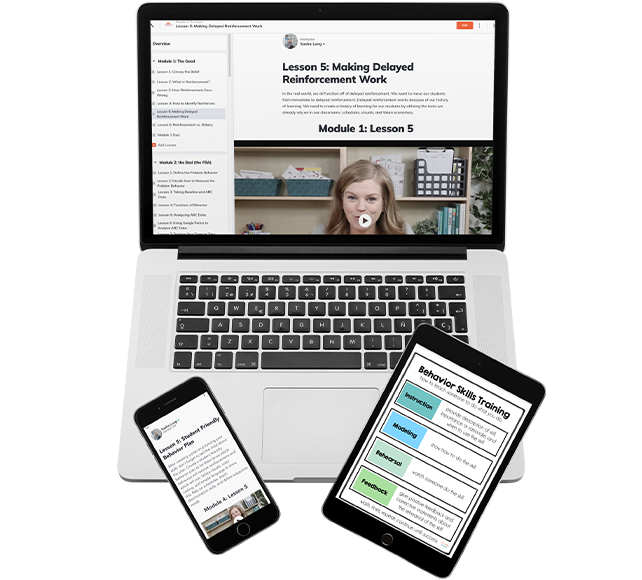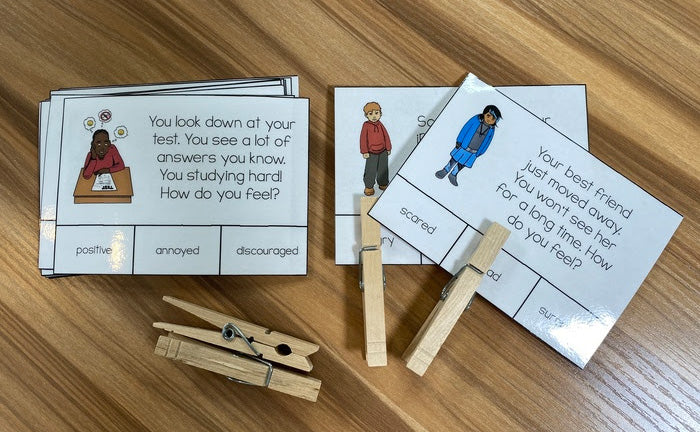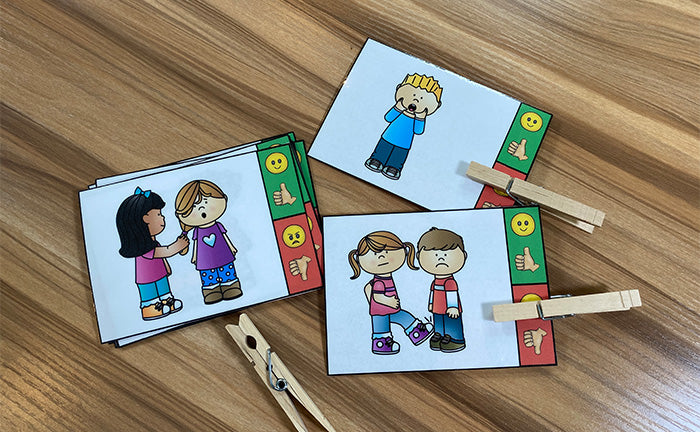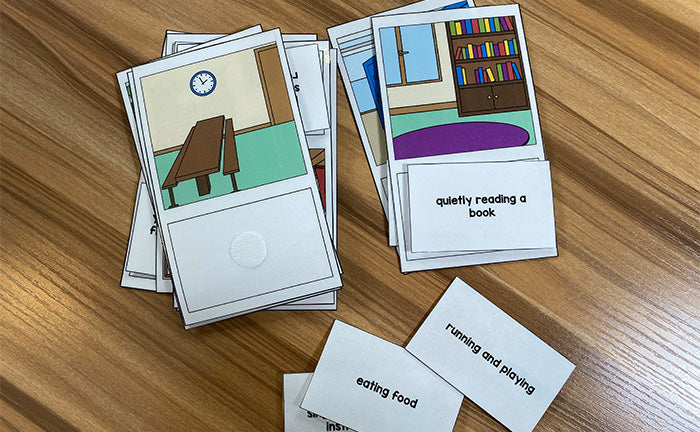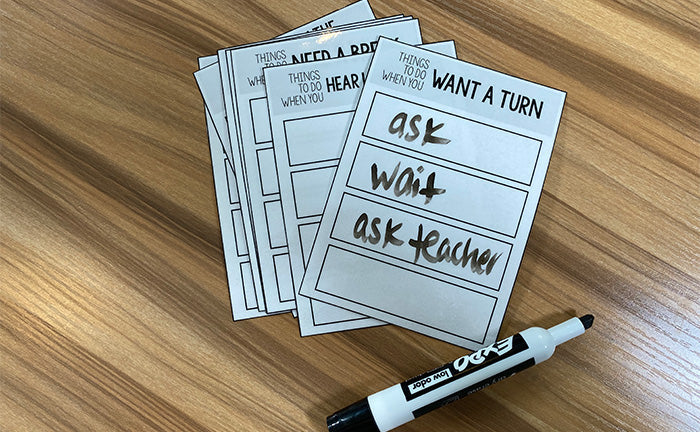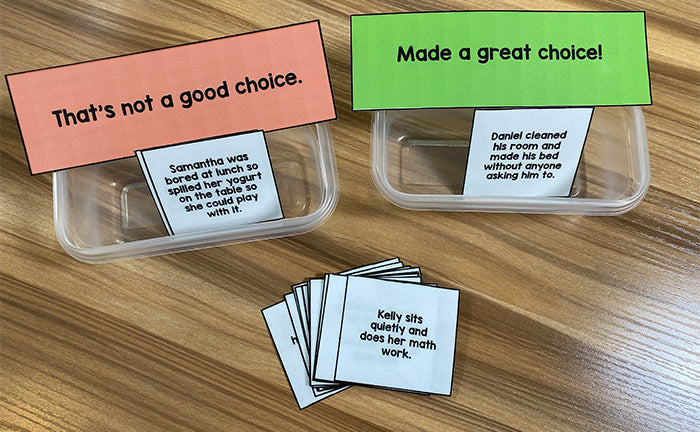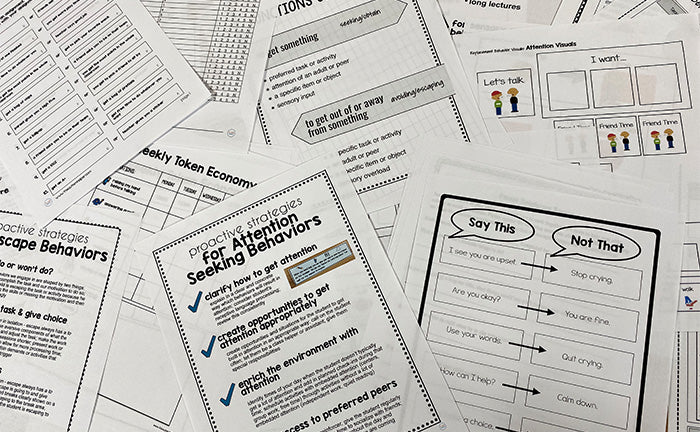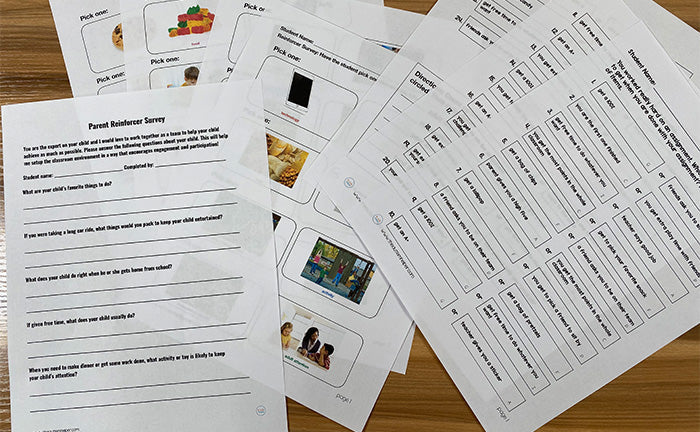Course Summary
In this online course, we breakdown the complex process of decreasing negative or dangerous behaviors and teaching positive, prosocial, and functional communication responses. This course gives you strategies in an easy to understand way and provides you with the tools to put these strategies into action.

Looking for School Licenses?
Ask your administration to cover the cost of the Positive Behavior Change Course! We accept purchase orders and can provide a School License for your team. Contact us to learn more about this option & group pricing!
What This Course Includes
 4 Modules with over 30 video lessons
4 Modules with over 30 video lessons Each topic is broken into short, actionable videos
Each topic is broken into short, actionable videos Concepts are explained in a user friendly way
Concepts are explained in a user friendly way Ready to use templates, handouts, and behavior tools
Ready to use templates, handouts, and behavior tools 5 continuing education hours upon completion
5 continuing education hours upon completion
Here’s a peek into the Behavior Change Course:
Module 1:
Increasing Positive Behaviors
Module 2:
Function Based Assessment
Module 3:
Behavior Intervention Plan
Module 4:
When Things Don’t Go As Planned
Tour the portal

-
 For special education teachers, parents, & clinicians
For special education teachers, parents, & clinicians -
 Teachers how to do a Functional Behavior Assessment & set up a function based Behavior Intervention plan
Teachers how to do a Functional Behavior Assessment & set up a function based Behavior Intervention plan -
 Focuses on behaviors for students with a diagnosis &/or an IEP
Focuses on behaviors for students with a diagnosis &/or an IEP -
 Great for a life skills & self-contained teachers
Great for a life skills & self-contained teachers -
 Includes in-depth training on collecting and analyzing behavior data
Includes in-depth training on collecting and analyzing behavior data -
 Provides instruction on how to use positive reinforcement correctly and effectively
Provides instruction on how to use positive reinforcement correctly and effectively


-
 For all teachers (general ed & special ed), parents, & clinicians supporting any students with challenging behaviors
For all teachers (general ed & special ed), parents, & clinicians supporting any students with challenging behaviors -
 Provides a toolbox of strategies that can be used in a wide range of settings with any individuals
Provides a toolbox of strategies that can be used in a wide range of settings with any individuals -
 Focuses on behavior For students with & without a diagnosis
Focuses on behavior For students with & without a diagnosis -
 Rooted in the science of Applied Behavior Analysis & trauma-informed practices
Rooted in the science of Applied Behavior Analysis & trauma-informed practices -
 Includes detailed training on contributing factors to behavior, including diagnosis, anxiety, trauma, & sensory needs
Includes detailed training on contributing factors to behavior, including diagnosis, anxiety, trauma, & sensory needs -
 Includes training on de-escalation & emotional regulation
Includes training on de-escalation & emotional regulation

Testimonials From Past Course Participants
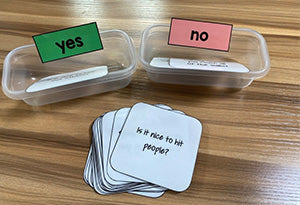
“I loved the course! It was straight-forward and easy to understand. I really liked how the concepts were broken down into short segments so they weren't too overwhelming. My favorite part is the tools provided. They are so user friendly and they will be super-useful for educating school teams.”
– Susan
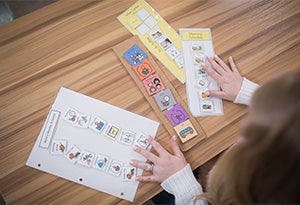
"As a certified special education teacher and a BCBA, your class had amazing hand outs and resources that are extremely user friendly and organized. I don’t think I have ever taken a class that offered more materials that I could literally use immediately. Thank you for the clear, concise way you explained topics that are often easily confused by people outside of our field!"
– Kerri
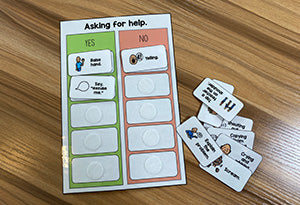
"The format of the course allowed for "bite-sized" chunks of information to be viewed and digested in small amounts of time. Once I started a session, I became hooked and usually completed several at a time. The information was very well organized and truly addressed all facets of behavior programming (the good, the bad and the ugly)."
– Noor
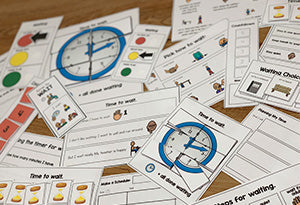
"I can't wait to get back to school and work with teams using all of my new tools to support the staff in supporting their students. The 'optional' Behavior Change Tool Box is NOT to be missed. So many treasures that I can't wait to try out! Thank you Sasha and The Autism Helper for providing this course. I am so glad I took it and I have already suggested it to other people at my school!"
– Abigail
Behavior Course FAQs
You have questions, we have answers. Learn more about this course below.
Who is this course for?
This course was created for general and special education teachers, paraprofessionals, clinicians, and parents who are looking to learn more about behavior fundamentals and strategies.
What are the course objectives and agenda?
Course Objectives
- Identified what reinforcement is, how to identify reinforcers, and how to fade to delayed reinforcement effectively.
- Defined a problem behavior in observable and measurable language.
- Listed ways to measure a behavior and identified appropriate measurement methods based on the topography of the behavior.
- Identified the importance of taking baseline data.
- Listed and described the functions of behavior, as well as how to hypothesize function, based on data using a variety of methods including data review and Google forms.
- Created ABC data sheets.
- Described and implemented training procedures for teaching team members to collect accurate and reliable ABC data.
- Explained the Starve It and Replace It Framework. Identified maintaining contingencies for problem behaviors and described ethical and appropriate options for removing or minimizing these contingencies. Defined replacement behaviors and why they are important.
- Listed ways to measure ongoing progress of the behavior plan through appropriate data collection methods on the problem behavior.
- Listed proactive strategies for attention maintained, escape maintained, and sensory behaviors.
- Defined and described how and when to implement Planned Ignoring and Time Out procedures.
- Defined and described how and when to implement Response Interruption and Redirection.
- Defined and described how and when to implement Differential Reinforcement of Other Behaviors for a variety of function types.
- Described and implemented training procedures for teaching team members to implement a behavior plan.
- Listed potential actions to take when a behavior plan and/or staff training is not working.
- Described how to create a student and staff friendly version of a behavior plan.
- Described how to implement behavior contingency maps, behavior contracts, and Check In Check Out plans.
- Explained and created a crisis plan. Described steps to take following a crisis.
Agenda
| Module 1: The Good | |
|---|---|
| minute 0 – 8.5 | Convey Belief |
| minute 8.5 – 16.5 | What is reinforcement? |
| minute 16.5 – 29 | How Reinforcement Goes Wrong? |
| minute 29 – 37.5 | How to Identify Reinforcers |
| minute 37.5 – 45 | Making Delayed Reinforcement Work |
| minute 45 – 51 | Reinforcement vs. Bribery |
| Module 2: The Bad | |
| minute 51 – 66 | Define the Problem Behavior |
| minute 66 – 72 | Decide how to Measure the Problem Behavior |
| minute 72 – 83 | Taking Baseline and ABC Data |
| minute 83 – 98 | Functions of Behavior |
| minute 98 – 107 | Analyzing ABC Data |
| minute 107 – 114 | Using Google Forms to Analyze ABC Data |
| minute 114 – 124 | Training Your Team to Take ABC Data |
| Module 3: The Bad | |
| minute 124 – 139 | Change the Contingency: Starve It |
| minute 139 – 158 | Replacement Behavior |
| minute 158 – 164 | Taking Ongoing Behavior Data |
| minute 164 – 168 | Proactive Strategies: Clarify the New Deal |
| minute 168 – 172 | Proactive Strategies for Attention Behaviors |
| minute 172 – 181 | Proactive Strategies for Escape Behaviors |
| minute 181 – 188 | Proactive Strategies for Sensory Behaviors |
| minute 181 – 188 | Proactive Strategies for Sensory Behaviors |
| minute 188 – 198 | Reactive Strategies: Planned Ignoring and Time Out |
| minute 198 – 205 | Reactive Strategies: Response Interruption and Redirection |
| minute 205 – 213 | Reactive Strategies: Differential Reinforcement of Other Behaviors |
| minute 213 – 223 | Training Your Team to Implement the Strategy |
| Module 4: When Things Don’t Go As Planned | |
| minute 223 – 233 | If Your Interventions Aren’t Working… |
| minute 233 – 238 | What NOT to Do |
| minute 238 – 243 | User Friendly Behavior Plan |
| minute 243 – 249 | Staff Training Troubleshooting |
| minute 249 – 254 | Student Friendly Behavior Plan |
| minute 254 – 261 | Behavior Contingency Maps |
| minute 261 – 279 | Behavior Contracts |
| minute 279 – 289 | How to Create a Crisis Plan |
| minute 289 – 300 | Reflect and Learn from a Crisis |
When will I have access to this course?
You will receive an invite to join The Autism Helper Network within 15 minutes of signing up. Once you’ve set up your account, you will be able to access the course. You will have access to this course for 6 months from the date of purchase. If you have not received either email within 15 minutes, please check your spam folder first. If you cannot locate them there, please contact us at customerservice@theautismhelper.com
Can I earn continuing education credits for this course?
All course content must be watched/completed in its entirety including the course feedback form within 6 months to receive any continuing education credits. The date on the certificate will match the date you complete all course components. No partial credit will be given.
Teachers
You can earn 5 continuing education credits upon completion of this course. School districts differ in what they will accept as a continuing education credit. It is up to each course participant to confirm that continuing education credits from The Autism Helper, Inc. will be approved by your school district.
BCBAs
Sasha Long, BCBA is an Authorized Continuing Education (ACE) provider from the Behavior Analyst Certification Board. This course provides Type 2 continuing education credits.
W9 Request
If I have a tech issue, how do I get help?
If you’re experiencing technical issues, please contact us at customerservice@theautismhelper.com
How can I request accommodations?
The Autism Helper, Inc. is committed to providing equal opportunities in accordance with all applicable laws. If you are in need of a disability-related accommodation, please contact customerservice@theautismhelper.com. We will review your request and respond in a timely manner. Please note that we will require a minimum of 4 weeks to provide a reasonable accommodation for your request.
How do I cancel? Do you offer refunds?
In the event a purchaser is not satisfied with a course, he or she can request a full refund via email to customerservice@
Please note, that any course on a subscription model rather than a one time purchase, can be canceled at any time. All memberships will renew automatically based on your subscription plan. For monthly subscriptions, a refund will be issued for the current month only, and only if the cancelation request is received within 5 days of the monthly payment. If the cancelation request is received more than 5 days after the monthly payment is processed, the purchaser will retain access for the remainder of that monthly period and the cancelation will be scheduled to process the day before the next scheduled payment. For annual subscriptions, a full refund will be issued if the cancelation request is received within 30 days of the annual payment. Any requests received after 30 days, will receive a prorated refund based on the number of months left in their annual subscription. For each month remaining, the member will be refunded $27.50.
Once you have canceled you will no longer have access to the Membership Dashboard nor any content on The Autism Helper Membership or course.
In the event The Autism Helper is unable to host a course for any reason, all associated costs and fees will be refunded to the purchasers. In the event that The Autism Helper must reschedule the start of a course and the new date is unsatisfactory to the purchaser, a full refund of costs and fees will be issued upon the purchaser’s request to customerservice@
How can I leave you a complaint, feedback or ask questions?
We’d love to hear your feedback and answer your questions! You can send them to customerservice@theautismhelper.com. We strive to respond to all feedback and question emails within 48 business hours. There is also a mandatory feedback form related to this course at the end of the course.







 4 Modules with over 30 video lessons
4 Modules with over 30 video lessons Discover how to increase positive behaviors
Discover how to increase positive behaviors

